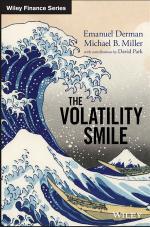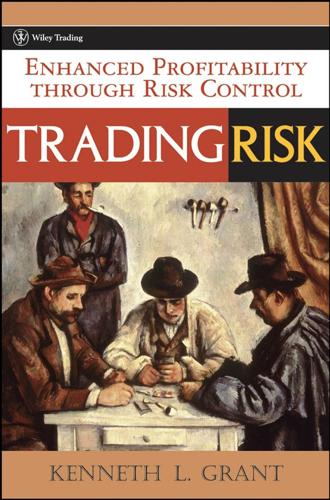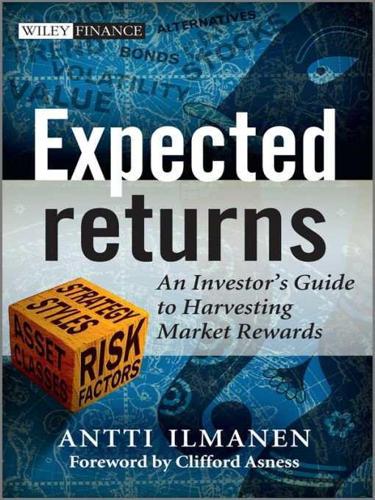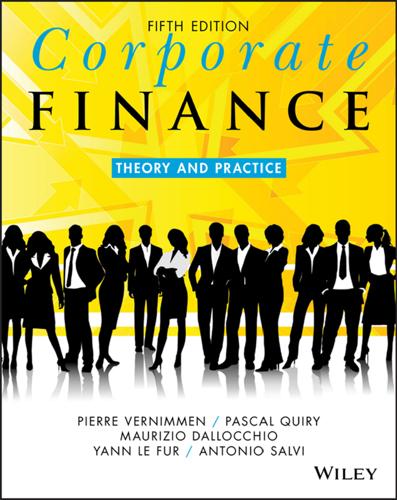
Frequently Asked Questions in Quantitative Finance
by
Paul Wilmott
Published 3 Jan 2007
Mahalo and aloha to my ever-encouraging wife, Andrea. About the author Paul Wilmott is one of the most well-known names in derivatives and risk management. His academic and practitioner credentials are impeccable, having written over 100 research papers on mathematics and finance, and having been a partner in a highly profitable volatility arbitrage hedge fund. Dr Wilmott is a consultant, publisher, author and trainer, the proprietor of wilmott.com and the founder of the Certificate in Quantitative Finance (7city.com/cqf). He is the Editor in Chief of the bimonthly quant magazine Wilmott and the author of the student text Paul Wilmott Introduces Quantitative Finance, which covers classical quant finance from the ground up, and Paul Wilmott on Quantitative Finance, the three-volume research-level epic.
…
Risk magazine 7 (2) 32-39 (February) Dupire, B 1994 Pricing with a smile. Risk magazine 7 (1) 18-20 (January) Heston, S 1993 A closed-form solution for options with stochastic volatility with application to bond and currency options. Review of Financial Studies 6 327-343 Javaheri, A 2005 Inside Volatility Arbitrage. John Wiley & Sons Lewis, A 2000 Option valuation under Stochastic Volatility. Finance Press Lyons, TJ 1995 Uncertain Volatility and the risk-free synthesis of derivatives. Applied Mathematical Finance 2 117-133 Rubinstein, M 1994 Implied binomial trees. Journal of Finance 69 771-818 Wilmott, P 2006 Paul Wilmott On Quantitative Finance, second edition.
…
Jump-diffusion models allow the stock (and even the volatility) to be discontinuous. Such models contain so many parameters that calibration can be instantaneously more accurate (if not necessarily stable through time). References and Further Reading Gatheral, J 2006 The Volatility Surface. John Wiley & Sons Javaheri, A 2005 Inside Volatility Arbitrage. John Wiley & Sons Taylor, SJ & Xu, X 1994 The magnitude of implied volatility smiles: theory and empirical evidence for exchange rates. The Review of Futures Markets 13 Wilmott, P 2006 Paul Wilmott On Quantitative Finance, second edition. John Wiley & Sons What is GARCH? Short Answer GARCH stands for Generalized Auto Regressive Conditional Heteroscedasticity.

The Volatility Smile
by
Emanuel Derman,Michael B.Miller
Published 6 Sep 2016
In the limit, as the number of periods n → ∞ with n𝛿t = tn − t0 ≡ T remaining fixed, we can replace the sums by integrals to obtain the result CT − ΔT ST + Δ0 S0 erT + T ∫0 er(T−x) Sx [dΔx ]b (5.15) Here we have replaced the subscript n with T, to clearly indicate that these are the values at expiration. The subscript b at the end of the formula denotes a backward Itô integral2 in which the increment dΔx is the infinitesimal 1 The following sections are based on Riaz Ahmad and Paul Wilmott, “Which Free Lunch Would You Like Today Sir?: Delta Hedging, Volatility, Arbitrage and Optimal Portfolios” (2005). This chapter also owes a debt to Peter Carr, “Frequently Asked Questions in Option Pricing Theory” (1999). 2 For a review of backward Itô integrals, see Appendix B. 91 −Δ2 Short Δ2 – Δ1 shares. ... . Short Δn – Δn–1 shares. 2 ... . n −Δn ... . −Δ1 2 −Δ1 Short Δ1 − Δ0 shares to rehedge. 1 −Δ0 Net # of Shares −Δ0 Short Δ0 shares.
…
This single, theoretically unique implied tree will value all standard options in agreement with their market prices, and consistently within a single model, rather than having to use an inconsistent BSM framework with different underlying volatilities for each standard option. The local volatility surface calculated from market prices can also be useful for volatility arbitrage trading. You can calculate future local volatilities implied from option prices and then decide if they seem reasonable. If these future volatilities seem unreasonably low or high, you might consider buying or selling butterfly and calendar spreads, in effect betting on future realized volatility at some future stock level and time.
…
To describe the volatility smile in the presence of negative jumps, we could use similar reasoning applied to a put that, after the jump, would have a value close to that of a short position in a forward contract. References Ahmad, Riaz, and Paul Wilmott. 2005. “Which Free Lunch Would You Like Today Sir?: Delta Hedging, Volatility, Arbitrage and Optimal Portfolios.” Wilmott (November). Andersen, Leif, and Jesper Andreasen. 2000. “Jump-Diffusion Processes: Volatility Smile Fitting and Numerical Methods for Option Pricing.” Review of Derivatives Research 4 (3): 231–262. Birru, Justin, and Stephen Figlewski. 2012. “Anatomy of a Meltdown: The Risk Neutral Density for the S&P 500 in the Fall of 2008.”

Trading Risk: Enhanced Profitability Through Risk Control
by
Kenneth L. Grant
Published 1 Sep 2004
However, there are scenarios under which these portfolios (perhaps due to the demands of the firms that provide leverage to convertible 106 TRADING RISK arbitrage portfolio managers) might suffer from the worst of all possible combinations: The bonds drop in value while the equities experience a contemporaneous rise. It behooves those who either manage or fund convertible arbitrage portfolios to have a clear understanding of the risks associated with these worst-case scenarios. 3. Options Volatility Arbitrage. For those intrepid few wishing to capitalize on subtle and theoretically unsustainable discrepancies in the volatility pricing of options with the same or highly similar underliers, it is prudent to create a scenario analysis that specifically targets conditions under which these mispricings extend themselves.
…
See Scientific method Optimal f, 245–251 Optimism, importance of, 4 Options: asymmetric payoff functions, 150–151 implications of, generally, 148–149 implied volatility, 86–89, 150 leverage, 151–153 nonlinear pricing dynamics, 149 pricing, 88–89, 106 strike price/underlying price, relationship between, 149–150 volatility arbitrage, 106 Out-of-the-money option, 150 Over-the-counter derivatives, 148 Performance analysis, 7–8 Performance metrics, 16, 35 Performance objectives: “going to the beach,” 32–36 importance of, 19–20, 29 nominal target return, 20, 24–26 optimal target return, 20–24 stop-out level, 20–21, 26–32 Performance ratio, 188–200 Performance success metrics: accuracy ratio (win/loss), 184–186 impact ratio, 186–188 performance ratio, 188–200 profitability concentration (90/10) ratio, 200–208 Planning, importance of, 9.

Expected Returns: An Investor's Guide to Harvesting Market Rewards
by
Antti Ilmanen
Published 4 Apr 2011
Excess return for such a product is proportional to the difference between squared implied volatility and squared realized volatility over the life of the contract. Backtested results were extremely impressive until 2007 but the losses in autumn 2008 were dramatic—and traumatic, prompting many investors to leave these strategies. The Merrill Lynch volatility arbitrage strategy, shown below, lost 12 years’ gradually earned excess returns in less than two months. (All index volatility-selling strategies plummeted in autumn 2008, but leverage made the losses of this index exceptionally high.) Although implied volatilities were high, realized volatilities exceeded them, reaching levels only seen during the 1987 crash.
…
Performance and risk statistics of S&P and index option-trading strategies, 1989–2009 Sources: Bloomberg, Chicago Board of Exchange, Bank of America Merrill Lynch. Table 15.1 (based on weekly data) illustrates how 2008 “revealed” the riskiness of various option-trading strategies, while at the same time long-run performance statistics became less appealing. The downfall was even worse for the “pure” volatility arbitrage strategy than for covered-option-writing strategies. Over 1989–2009, the latter still display higher returns and Sharpe ratios than a simple long-equities strategy (first column), but this advantage comes with less appealing tail risk or higher moment exposures: more negative skewness and higher kurtosis.
…
This composite trend style index applies a simple trend-following rule each week on commodity futures, equity country futures, bond/rate futures, and foreign exchange forwards: go long (short) if the current price is above (below) the 12-month moving average. Data are mainly from Bloomberg. Volatility. Volatility-selling returns are based on the simulated Merrill Lynch Equity Volatility Arbitrage Index since 1989, which tries to gain from the typically positive gap between market-implied volatility and subsequent realized volatility of the S&P 500 index’s Bloomberg ticker MLHFEV1 index. Chapter 15 also analyzes the simulated covered-call-writing indices and put-writing indices (BXM, BXY, PUT in Bloomberg) on the S&P 500 index from the Chicago Board of Exchange, dating back to the 1980s.

Wealth and Poverty: A New Edition for the Twenty-First Century
by
George Gilder
Published 30 Apr 1981
Let’s say you floated the hour, 60 minutes in an hour one day, 50 the next, 85 the next. You would soon have to have hedges to insure against changes in the measure of time,” just to calculate your hours of work in “real terms.” You would have runaway sales of “hour insurance swaps,” and GDP might even go up for awhile, but real economic progress is not volatility arbitrage. Or, to change the metaphor, U.S. monetary policy resembles a housing policy pronouncement: “If we change the size of a foot from 12 to 15 inches, everyone will have a bigger house.” As Forbes comments, “In the real world, you’ll likely end up with a lot of confusion and fewer homes being built.

Corporate Finance: Theory and Practice
by
Pierre Vernimmen
,
Pascal Quiry
,
Maurizio Dallocchio
,
Yann le Fur
and
Antonio Salvi
Published 16 Oct 2017
The illustrative financial analysis of the Italian appliance manufacturer Indesit will guide you throughout this section of the book. Section II reviews the basic theoretical knowledge you will need to make an assessment of the value of the firm. Here again, the emphasis is on reasoning, which in many cases will become automatic (Chapters 15–19): efficient capital markets, the time value of money, the price of risk, volatility, arbitrage, return, portfolio theory, present value and future value, market risk, beta, etc. Then we review the major types of financial securities: equity, debt and options, for the purposes of valuation, along with the techniques for issuing and placing them (Chapters 20–25). Section III is devoted to value, to its theoretical foundations and to its computation.